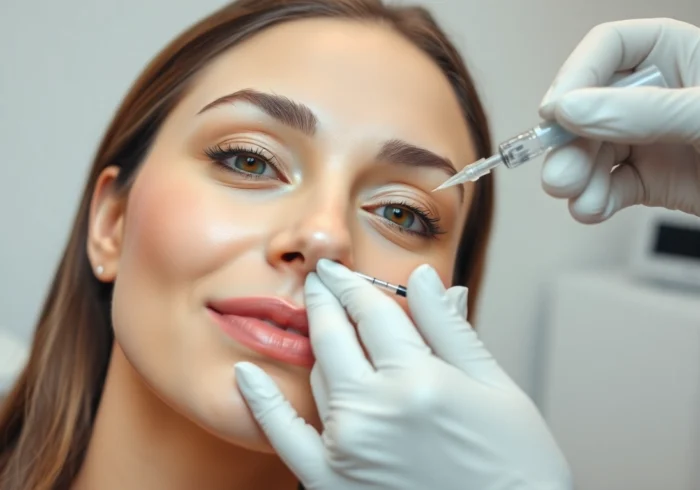Understanding E-cigarettes: An In-Depth Exploration of Vape Szurok Cookie and More
Introduction to E-cigarettes
The landscape of nicotine consumption has undergone a significant transformation over the past decade, with electronic cigarettes—commonly known as e-cigarettes—emerging as a popular alternative to traditional tobacco products. E-cigarettes are battery-powered devices designed to vaporize a liquid containing nicotine, flavorings, and other chemicals, producing an aerosol that users inhale. This device simulates the act of smoking while potentially offering reduced health risks compared to combustible cigarettes.
For enthusiasts interested in tailored vaping experiences, options like the Vape szurok Cookie have gained popularity, blending flavorful profiles with innovative delivery systems. If you’re considering transitioning from traditional smoking or exploring new vaping options, understanding the fundamentals of e-cigarettes is essential. You can learn more about these devices and their offerings at E-cigarette.
What Is an E-cigarette and How Does It Work?
An e-cigarette is a device that heats a specially formulated liquid—often called e-liquid or vape juice—into an aerosol or vapor that the user inhales. Unlike traditional cigarettes, which combust tobacco to release nicotine along with thousands of harmful chemicals, e-cigarettes utilize a heating element, known as an atomizer, to convert liquid into vapor without combustion.
The core function hinges on a simple yet efficient process: a battery powers the atomizer, which heats the e-liquid. As the liquid heats up, it transforms into vapor, delivering nicotine and flavorings directly to the user’s lungs. This process reduces exposure to many toxic substances found in tar and combustion byproducts, making e-cigarettes a potentially less harmful alternative.
To get a comprehensive overview of how these devices work, you can explore detailed information at Wikipedia’s Electronic Cigarette article.
Different Types of E-cigarettes and Vaping Devices
E-cigarettes come in a variety of forms, each catering to different user preferences and experiences:
- Cigalikes: Designed to resemble traditional cigarettes, these are simple, disposable or rechargeable devices aimed at beginners.
- Vape Pens: Slightly larger with refillable tanks, offering more battery life and customization options.
- Pod Systems: Compact devices with replaceable pods containing e-liquid, known for ease of use and portability.
- Mechanical Mods and Advanced Vape Devices: Customizable devices suitable for experienced vapers seeking high power and extensive modifications.
The proliferation of device options reflects the evolving market, as users seek personalized vaping experiences. For instance, flavor profiles like Vape szurok Cookie cater to those looking for sweet, bakery-inspired vapors, delivered through sophisticated devices that maximize flavor and vapor production.
Key Components of E-cigarette Products
Typically, an e-cigarette comprises several essential parts:
- Battery: Powers the device and is rechargeable in most cases.
- Atomizer: The heating element responsible for vaporizing the e-liquid.
- Cartridge or Tank: Holds the e-liquid; refillable or disposable depending on the device type.
- Wick: Absorbs e-liquid and transfers it to the atomizer for vaporization.
- Mouthpiece: The part through which the user inhales vapor.
Advances in technology have led to more sophisticated designs, including temperature control and adjustable airflow, which influence the vaping experience significantly. High-quality components ensure consistency, safety, and flavor delivery, making informed choices crucial when selecting an e-cigarette.
The Benefits and Risks of Using E-cigarettes
Harm Reduction and Smoking Cessation Advantages
One of the most compelling reasons for the rising popularity of e-cigarettes is their potential as harm reduction tools. Compared to traditional cigarettes, e-cigarettes typically deliver lower levels of harmful chemicals. Several studies suggest that switching to vaping can significantly reduce exposure to carcinogens, making it an attractive option for smokers seeking to quit.
Moreover, vaping has been effectively integrated into smoking cessation strategies. For example, health agencies like the NHS recognize e-cigarettes as a less harmful alternative and a useful aid for quitting smoking altogether. The customizable nicotine levels allow users to gradually decrease intake, enhancing the likelihood of long-term cessation success.
Potential Health Risks and Side Effects
Despite their benefits, e-cigarettes are not without risks. The aerosol produced can contain nicotine, which is addictive, as well as other chemicals that may affect lung and organ health. Common side effects include throat irritation, coughing, and dizziness, especially during initial use or with high nicotine concentrations.
There are concerns about the long-term health effects, as research is still ongoing. Vaping-associated lung injuries, although rare, have been reported, and the inhalation of certain flavoring agents has been linked to respiratory issues. Furthermore, improper device handling or poor-quality products can pose safety hazards such as battery explosions.
Comparing E-cigarettes to Traditional Cigarettes
When comparing e-cigarettes and traditional tobacco cigarettes, the distinctions are stark:
- Combustion: Traditional cigarettes involve combustion, releasing thousands of toxic chemicals, many carcinogenic. E-cigarettes heat liquid without combustion, substantially reducing harmful emissions.
- Health Impact: While not entirely risk-free, vaping typically exposes users to fewer harmful substances, potentially resulting in fewer health issues like lung cancer, cardiovascular disease, and respiratory problems.
- Secondhand Exposure: Vapor dissipates more quickly and contains fewer toxins, reducing risks to bystanders.
Choosing the Right E-cigarette for You
Factors to Consider Before Buying
Selecting the appropriate e-cigarette involves evaluating several factors:
- Experience Level: Beginners may prefer simple, disposable models, whereas experienced users might opt for customizable devices.
- Nicotine Preference: Choose devices capable of delivering your desired nicotine strength, with options to taper off over time.
- Flavor Profile: Consider the flavors you enjoy—ranging from tobacco, menthol, to sweet bakery flavors like those found in Vape szurok Cookie.
- Budget and Maintenance: Balance initial costs with long-term expenses, including replacement coils, pods, or tanks.
Popular Brands and Product Features
Leading brands offer a variety of devices tailored to different needs. For example, reputable manufacturers provide reliable batteries, leak-proof tanks, and high-quality e-liquids. Features such as adjustable wattage, temperature control, and leak resistance can enhance user experience.
Tips for Safe and Responsible Vaping
To ensure safety and maximize benefits:
- Always purchase from trusted sources with verified safety standards.
- Use appropriate charging equipment to prevent battery issues.
- Monitor nicotine intake to prevent dependency; consider tapering over time.
- Store devices and e-liquids out of reach of children and pets.
- Stay informed about regulations and emerging health research related to vaping.
Regulations and Future Trends in E-cigarette Markets
Current Regulatory Environment and Legal Status
Globally, the regulation of e-cigarettes varies widely. Some countries have implemented strict bans or heavy restrictions, while others promote harm reduction by integrating vaping into public health strategies. In the European Union, for instance, regulations govern nicotine content, packaging, and advertising to ensure safety standards. These measures aim to prevent youth access and ensure product quality.
Staying compliant with local laws is essential for consumers and manufacturers alike. Transparent labeling, quality control, and adherence to distribution laws are vital components of a responsible market.
Emerging Technologies and Innovations
The future of e-cigarettes is driven by technological advancements, including smarter devices with Bluetooth connectivity, temperature regulation, and flavor customization. Innovations like nicotine salts allow for higher nicotine concentration with smoother inhalation, satisfying former smokers and experienced vapers.
Additionally, developments in tank design, coil longevity, and battery technology improve device efficiency, safety, and user convenience.
Market Growth and Consumer Preferences
The global e-cigarette market continues to expand, fueled by increasing adoption among adults seeking smoking alternatives and among youth attracted to flavor varieties. Consumer preferences increasingly favor discreet, easy-to-use devices with a wide range of flavors, such as Vape szurok Cookie, which combines appealing taste with effective nicotine delivery.
Market analysts predict sustained growth, with regulatory frameworks adapting to balance innovation, safety, and public health considerations.
Vaping and Personal Well-being
Impact on Lung Health and Organ Function
Although vaping is generally considered less harmful than smoking, concerns about lung health persist. Some studies indicate potential respiratory irritation and inflammation, especially with high nicotine levels or poor-quality products. The inhalation of certain flavoring agents, like diacetyl, has been associated with bronchiolitis obliterans, a serious lung condition.
Ongoing research aims to clarify long-term effects, emphasizing the importance of using certified devices and liquids.
Managing Nicotine Intake and Addiction Risks
Nicotine’s addictive properties demand responsible use. Vapers should be aware of their consumption levels and consider gradually reducing nicotine concentrations. Devices with adjustable wattage and nicotine levels facilitate controlled intake, aiding in quitting efforts.
Recognizing early signs of dependency and seeking support if necessary are key components of a healthy vaping routine.
Guidelines for a Safe Vaping Experience
To enjoy vaping responsibly:
- Start with low nicotine concentrations and increase cautiously.
- Follow manufacturer instructions for device use and maintenance.
- Avoid modifying devices beyond recommended specifications.
- Never vape in enclosed or unventilated spaces if unsure about vapor dispersal.
- Stay informed about new health studies and regulatory updates.



